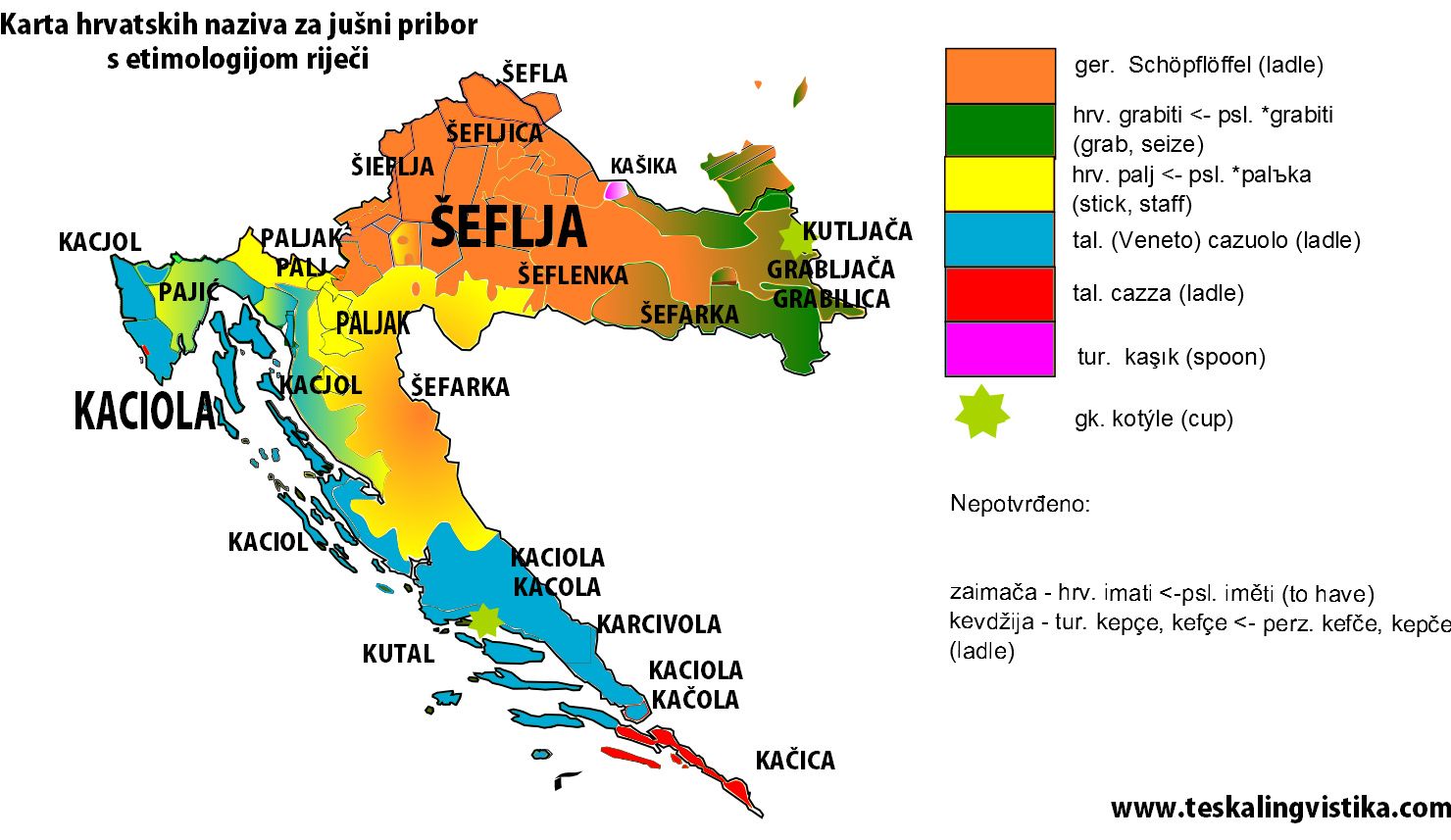You know, the big spoon-like thing you use for the soup and similar dishes?
If you’ve spent any time travelling around Croatia, you might have noticed that the Croatian language has various dialects, quite dissimilar from each other. Since we are geographically so diverse, and are located in the region where many wars have been fought, many armies have gone through and left their influences, there are parts of Croatia where language has maintained a lot of vocabulary from Turkish, Italian, Hungarian or German (those are the main influences).
A foreigner on a brief vacation in Dalmatia will mostly notice the Italian influence in their everyday interactions with the locals, and if you speak Italian you will have no problems understanding words like šugaman or lumbrela (well, hopefully you won’t hear that one very often during your vacation!), but venture a trip anywhere else, for instance to Plitvice or as far as Zagreb, and you’ll find out that those words are not really used and that your Italian won’t be of much help there.
The object that has achieved a type of notoriety in Croatia because of the sheer number and variations of terms used in different parts of the country to describe the same, everyday thing is, of course, the poor ladle. I won’t even venture into explaining why (because I don’t really understand it myself), or go into deep research on whether other languages have a similar problem with the “big spoon for the soup” (I know that English does not, for instance), but just look at the wealth of various words different dialects in Croatia use for the thing:

Image credit: http://www.klubputnika.org/zbirka/putoskop/3822-seflja-paljak-kaciol-grabljaca-kutlaca-ili-pak-zaimaca
As the author of the map and the article Andrej Hendelja says in the text, we could almost compare Croatian relationship to soup-managing objects with Eskimo’s relationship to snow when we see that wealth. We are, however, really not that obsessed with soup-like dishes (although, by the time Tea finishes with her "101 Tastes of Croatia", there might be quite a few that fall into that category), rather this just goes to prove how much Croatian dialects are influenced by other languages.
The author lists 9 terms used for the ladle (and most of them have smaller variations) in various parts of Croatia, and even colour-codes the map to help you navigate.
Orange, and the largest part of central Croatia is where the variations of “šeflja” are used, coming from German Schöpflöffel (try pronouncing that three times, but fast – if you’re not German!).
You can see blue down most of Croatian coast, and you can guess that “kaciola” comes from Italian – cazuolo. Red, mostly around Dubrovnik area, signifies “kačica”, also borrowed from Italian, but apparently a different Italian word, cazza.
Yellow is somewhat weird, because it is supposed to be coming from the marine terminology and yet it’s not really used in the regions by the sea. The words are “palj”, “paljak” or “pajić”, and “palj” is what the boat accessory used to throw water overboard used to be called, and it’s coming from Old Church Slavonic language word for stick or staff.
Green is where “grabilica” is found, a normal everyday Croatian word coming from the verb “grabiti” (although weirdly similar to English “grab”), used mostly in the Eastern-most parts of Croatia.
“Kutljača” is marked with the green star, as it was confirmed that the word “kutljača” and its variants are used in and around Split and Vukovar. I would’ve expected it to be more widespread, but apparently not so, and it supposedly comes from Greek kotýle, meaning a cup or a small dish.
Purple is a small region where it is confirmed that word “kašika” is used, an everyday Serbian word for the spoon. This is probably just a very limited use of this word.
And that leaves us with the word “zaimača”, which is used in the dictionaries and is supposed to be the “standard” and proper translation for ladle into Croatian. As you can see, it is not really used anywhere in Croatia, except for the dictionaries. And, honestly, I’ve never heard anyone use it unless they were making fun of how many words there were to describe the ladle.


